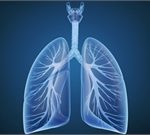
Looking to ring in the New Year with cocktails that are lower in calories? Here are three delicious options worthy of a special celebration any time of the year with a little fruit tossed in for good measure. For an elegant pink champagne cocktail, to each glass add 4 ounces of dry champagne or Spanish cava and 1 ounce of a raspberry- or rhubarb-flavored liquor like Aperol, a milder and less alcoholic aperitif compared to Campari. Top it off with a few fresh raspberries. For a pear-flavored Cosmopolitan, place 2 pear slices (you can leave on the skin), 1 tablespoon of lime juice and 1 ounce of cranberry juice in a shaker. Add 1-1/2 ounces of a citrus-flavored vodka and 1/2 ounce of triple sec, followed by ice. Shake well, then strain into a martini glass. Garnish with a pinch of cinnamon or ground cardamom. Want a festive recipe for a large gathering? Try a zesty gin fizz made with the luscious citrus of the season, blood oranges. Blood Orange Gin Fizz 3 blood oranges 1-1/2 cups gin 2 tablespoons sweetener of your choice 1/2 teaspoon bitters 2 bottles chilled champagne Cut one orange into 12 segments to use for garnishing and set aside. Remove the peel and pith from the other two oranges. Chop the segments and then mash them in a bowl. Add… read on >

















